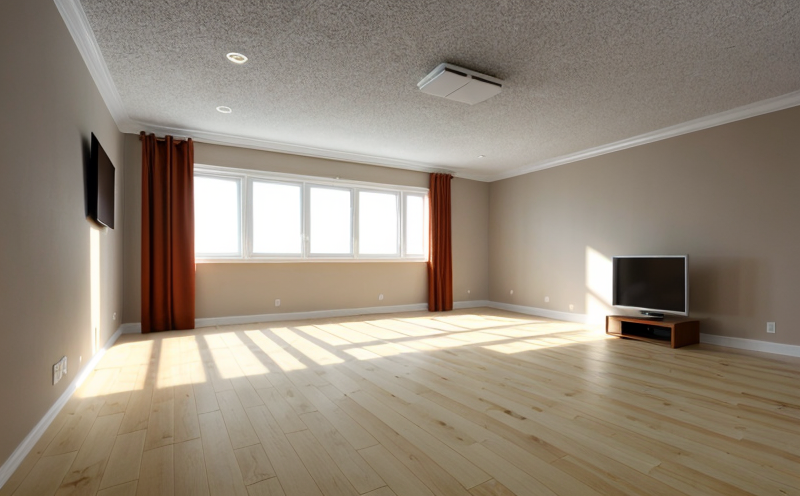EN 12354-1 Building Acoustics Calculation of Airborne Sound Insulation
The European Standard EN 12354-1 is a pivotal document in the field of building acoustics, specifically focusing on the calculation of airborne sound insulation. This standard provides methodologies for determining the performance of partitions and floors in buildings to ensure they meet specified levels of acoustic separation between spaces.
Building acoustics is a critical aspect of modern construction that impacts both comfort and functionality within living and working environments. Sound insulation is particularly important as it helps reduce noise pollution, enhances privacy, and improves overall indoor acoustic conditions. The calculation of airborne sound insulation using EN 12354-1 ensures compliance with international standards, thereby promoting healthier and more productive spaces.
The standard covers various types of partitions and floors, including:
- Internal walls
- External walls
- Floors above living space
- Ceilings separating adjacent rooms or spaces
The purpose of this service is to assist clients in calculating the airborne sound insulation performance of their building elements, ensuring they meet the required standards and deliver the expected acoustic benefits. This involves a detailed analysis using specific formulas and models provided by EN 12354-1.
To perform these calculations accurately, we employ advanced software tools that adhere strictly to the methodologies outlined in the standard. Our team of experts ensures that all inputs are precise and that the results reflect real-world conditions as closely as possible. This approach guarantees reliable outcomes that can be used for compliance purposes or internal quality assurance.
Our service includes:
- Data collection from existing structures or design drawings
- Input of relevant parameters into calculation software
- Evaluation against EN 12354-1 criteria
- Generation of detailed reports with recommendations for improvements if necessary
- Support in meeting certification requirements and regulatory standards
The accuracy and reliability of our calculations are paramount, as they directly influence the acoustic performance of buildings. By adhering strictly to EN 12354-1, we ensure that our clients receive precise and actionable insights into their building's acoustics.
Scope and Methodology
| Aspect | Description |
|---|---|
| Standard | EN 12354-1 European Standard for Building Acoustics - Calculation of Airborne Sound Insulation. |
| Data Collection | Involves gathering information about the materials, dimensions, and configurations of partitions or floors to be tested. |
| Modeling | Use of advanced software tools that simulate real-world acoustic conditions. |
| Evaluation Criteria | Comparison against specified criteria for acceptable levels of sound insulation based on the standard. |
The methodology outlined in EN 12354-1 is comprehensive and ensures that all relevant factors are considered when calculating airborne sound insulation. This approach not only meets regulatory requirements but also enhances the overall acoustic environment within buildings.
Quality and Reliability Assurance
- Data Accuracy: Rigorous checking of input data to ensure it reflects actual conditions.
- Software Validation: Regular verification of software tools against known benchmarks.
- Peer Review: Independent review of calculations by qualified professionals.
- Continuous Improvement: Ongoing updates and refinements based on feedback and technological advancements.
Our commitment to quality is reflected in our adherence to stringent processes that ensure the reliability and accuracy of every calculation performed under EN 12354-1. This dedication to excellence allows us to provide clients with confidence in their acoustic performance assessments.
Environmental and Sustainability Contributions
The work done under EN 12354-1 also contributes positively to environmental sustainability by promoting quieter, more energy-efficient spaces within buildings. Reduced noise levels can lead to decreased stress for occupants, which is beneficial not only in residential settings but also in public and commercial buildings.
By ensuring proper sound insulation, we contribute to a healthier living and working environment while supporting the broader goal of sustainable urban development. This aligns with global efforts towards creating more resilient cities that are environmentally conscious.





